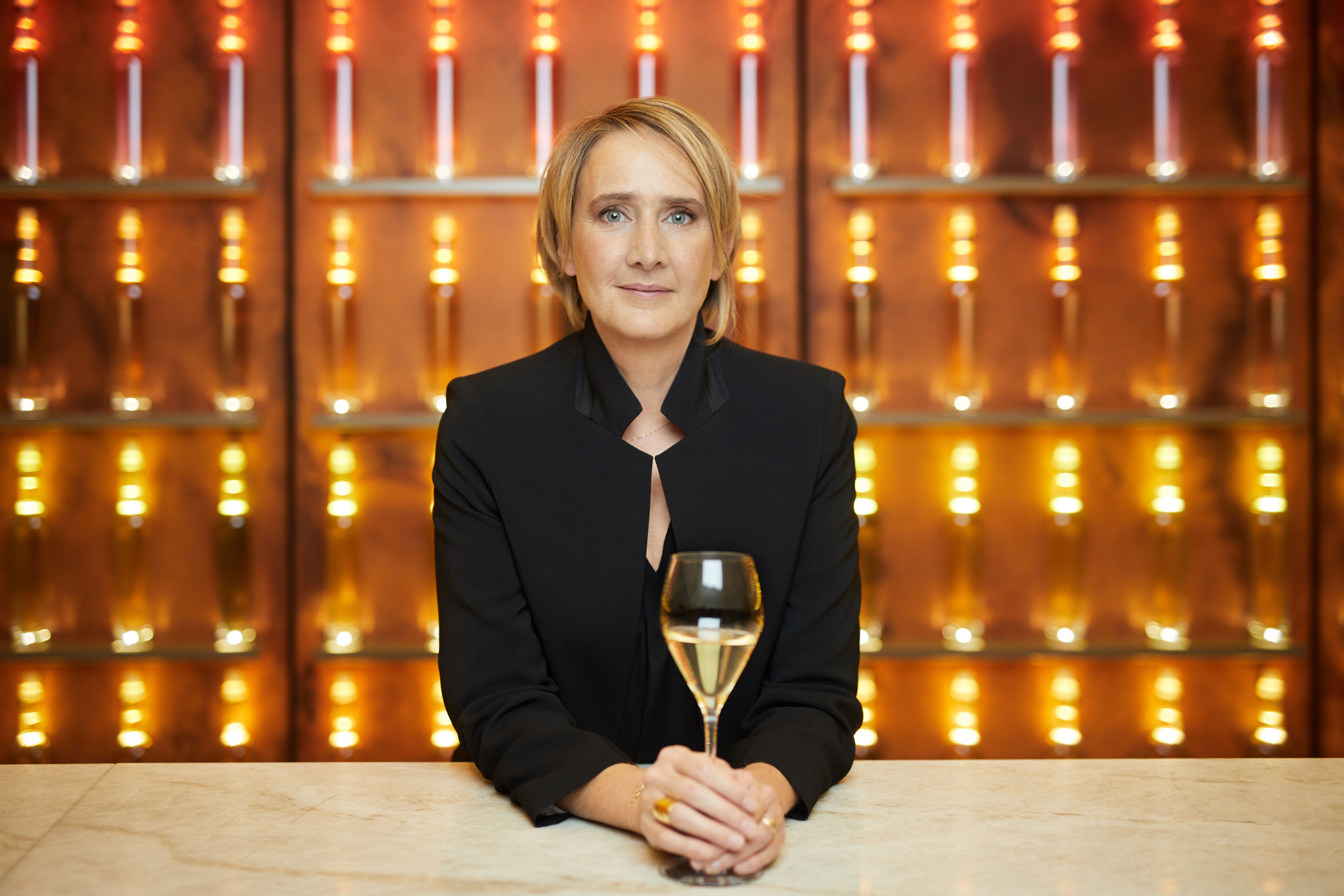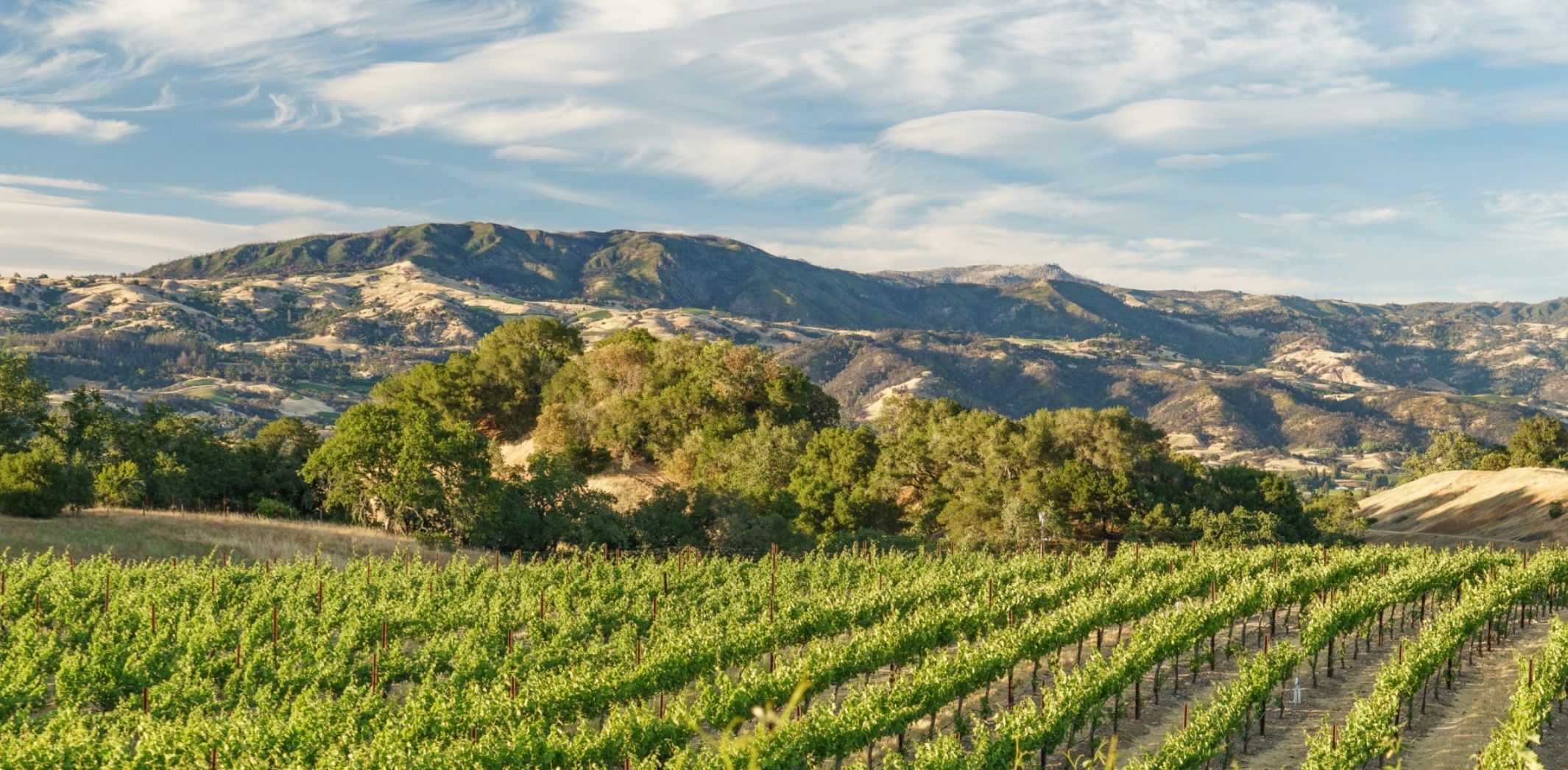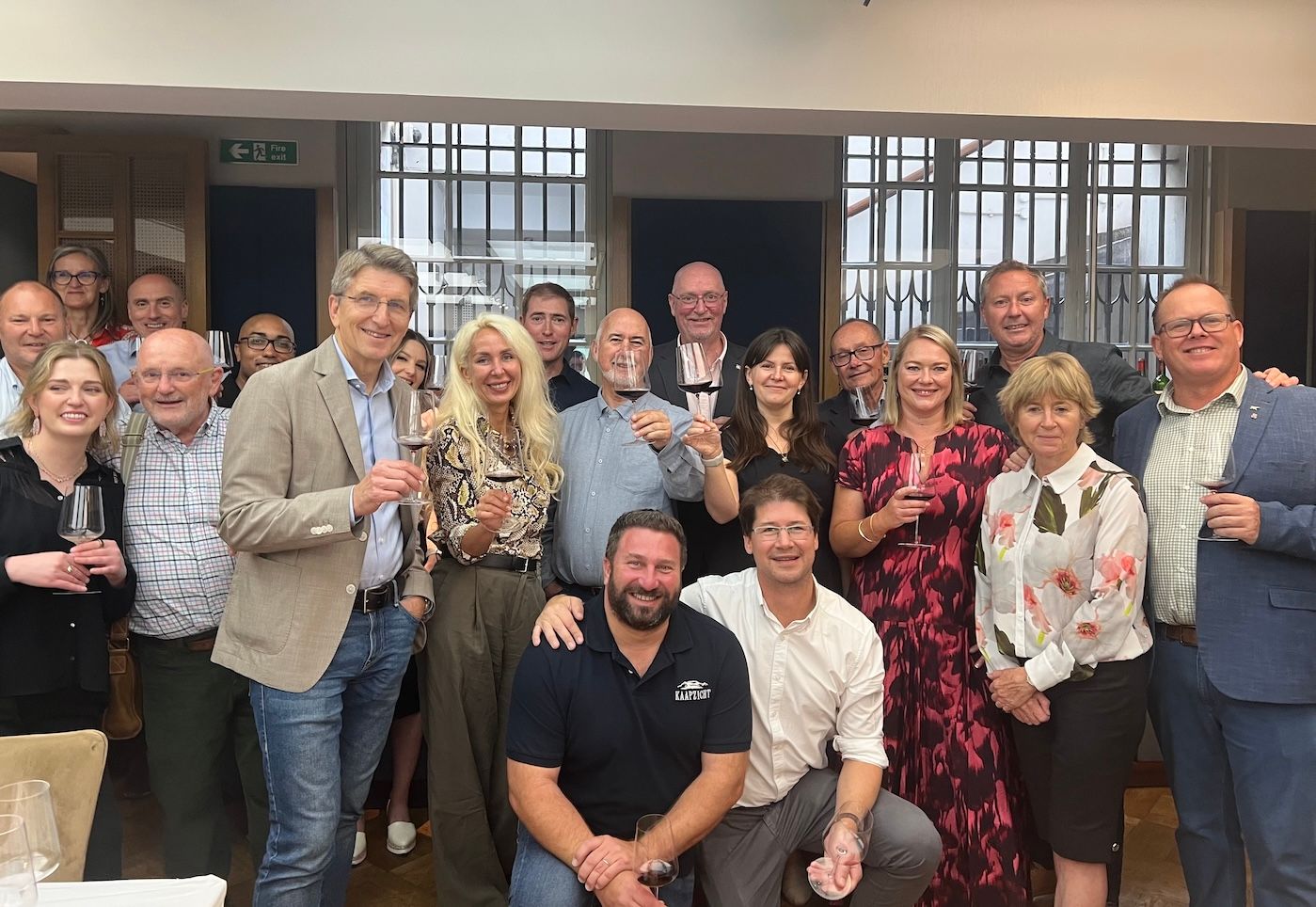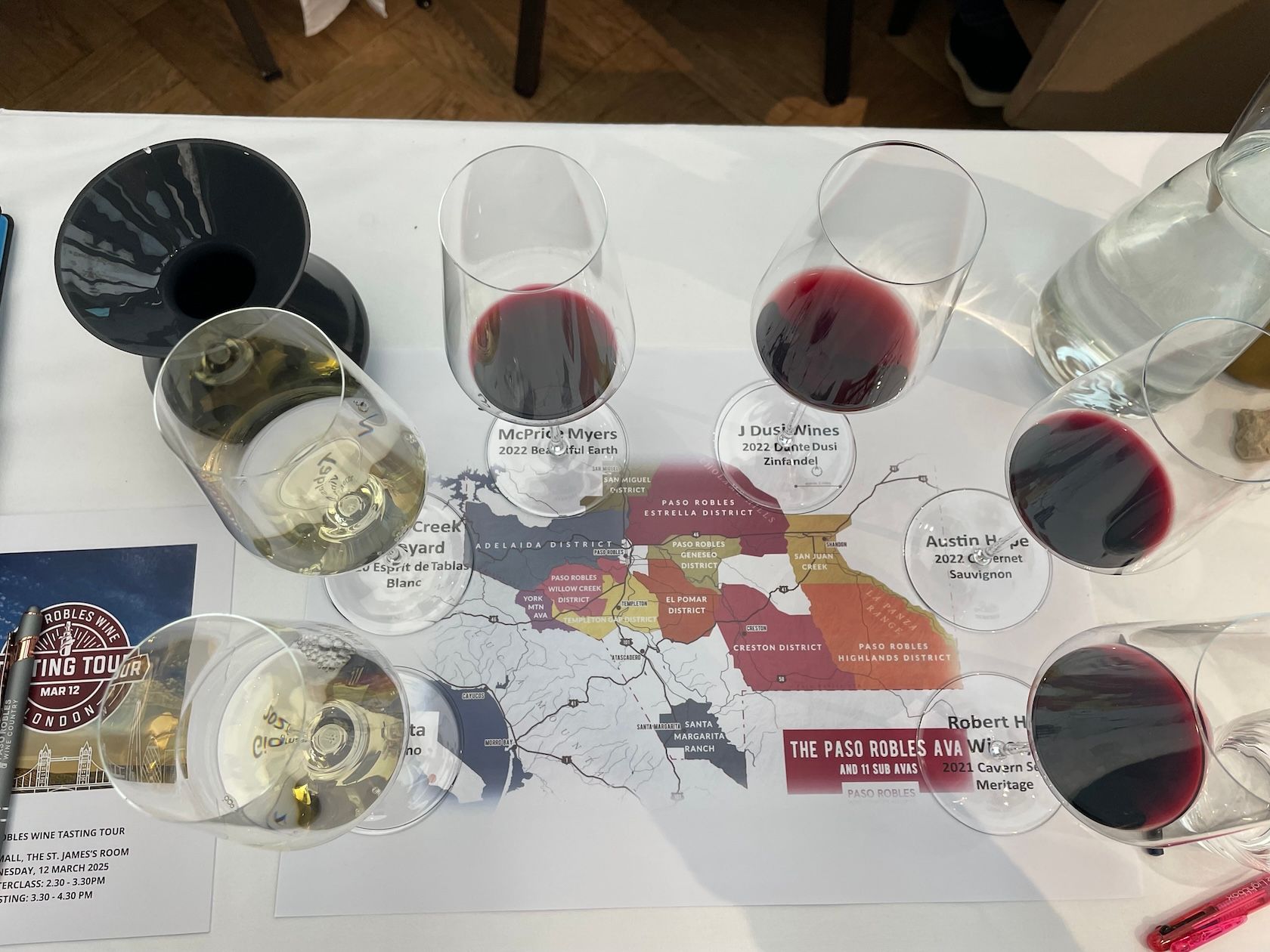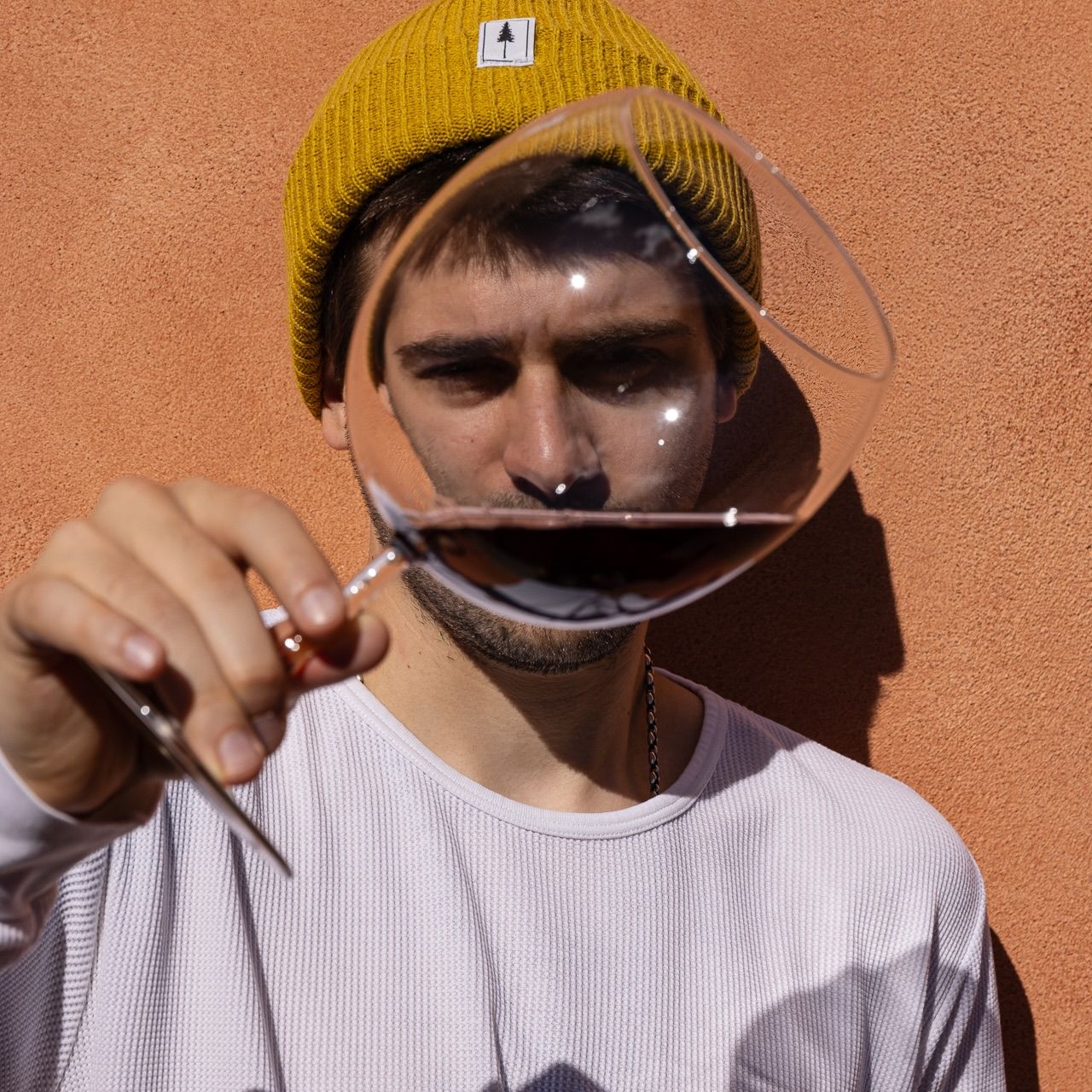Letting us discover terroir by using a bike was a masterstroke and could have many useful applications in wine education and tourism generally.
“I have seen the future of my cycling and it involves an e-bike and a basket” I declared during a cycle tour of Ogier’s vineyards in Châteauneuf-du-Pape.
We were on, what is commonly known of in the trade as, ‘a jolly’ – an invite to a variety of wine-related activities in the Rhône that was more about relationship and brand building than a full-on press trip. But what really stood out for the key national journalists from the UK and France, as well as some top sommeliers from throughout Europe, was this cycling tour of the vineyards and what an effective way it was of showing the effects of terroir on wine-making.
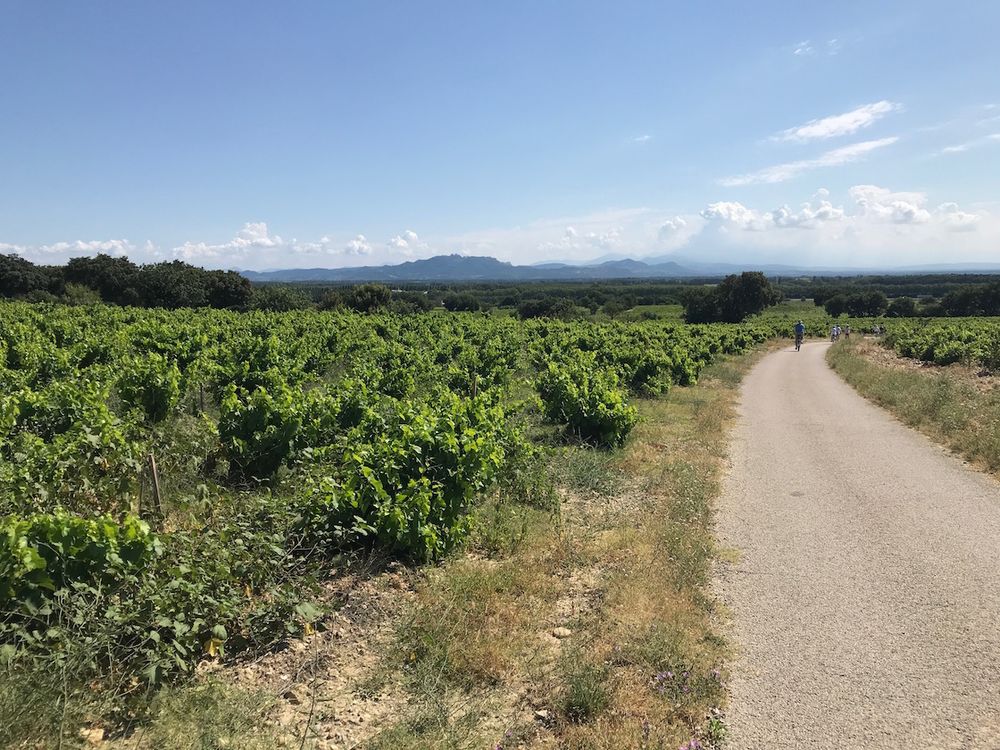
Getting a first hand experience of different vineyards by bike
The point that Ogier, one of the Rhône juggernauts, wanted to prove was a serious one – that you can taste different expressions of terroir in the finished wine.
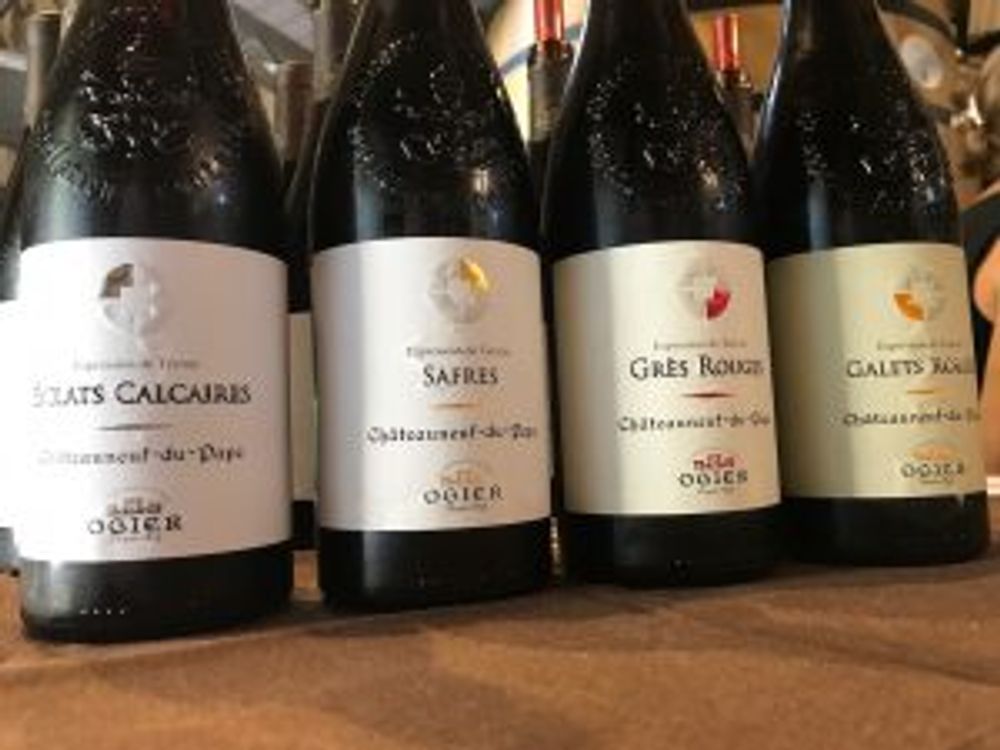
Ogier’s new range of four different expressions of Grenache
The company has produced a limited 5,000 bottle run of four different expressions of Grenache that has been grown in the four main terroirs of Châteauneuf-du-Pape: limestone, pebbles, sandstone and silt. Each wine has been vinified and matured in exactly the same way so that, tasting them side by side, you can really tell the difference that the soil type and location brings to the finished wine.
And so, what better way of showing this than putting us all on e-bikes and taking us from one location to the other where a tasting table had been set up with the Grenache made from each specific terroir?
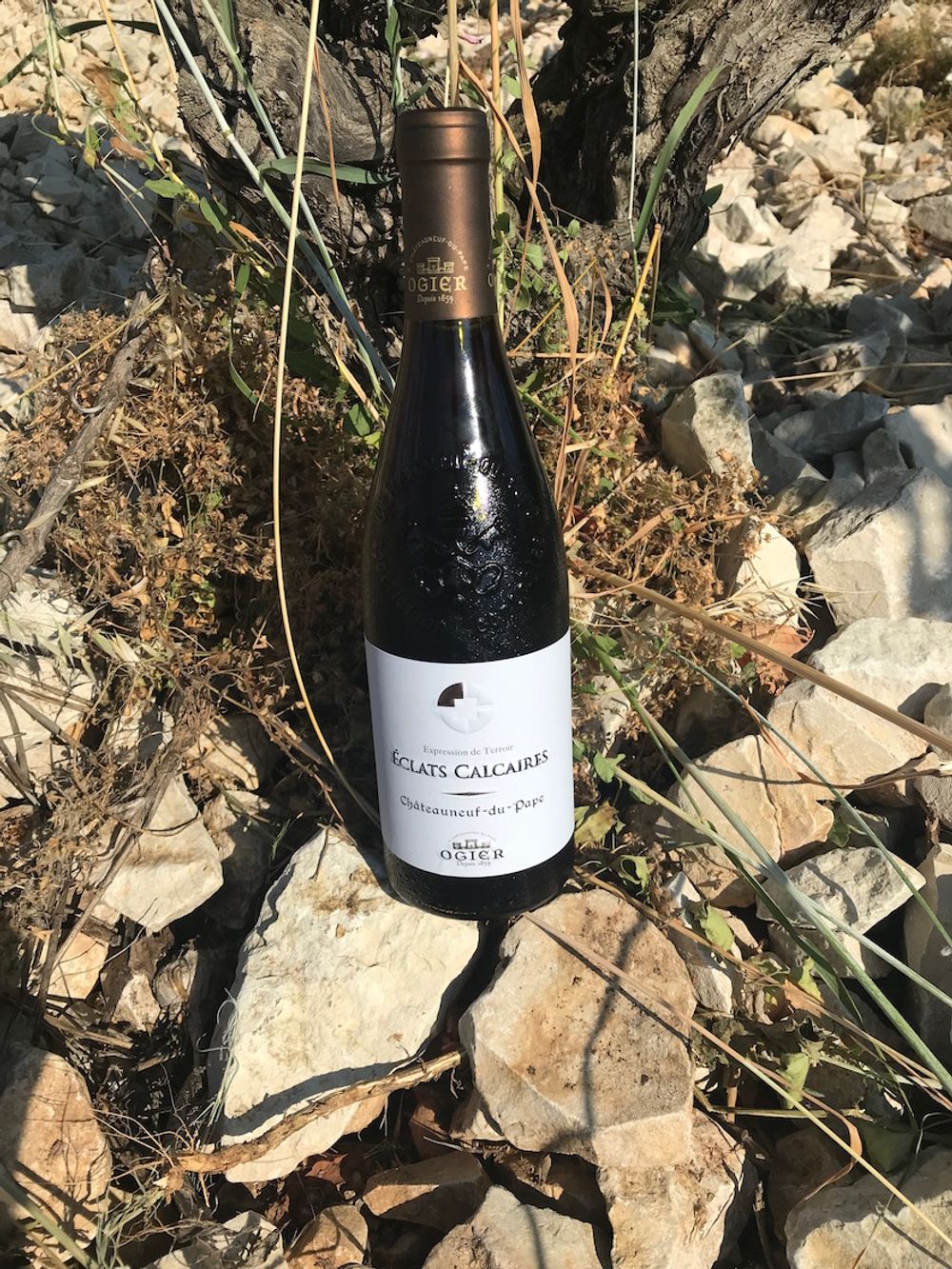
Stop 1: tasting Grenache made from vines grown on limestone
It might sound obvious but what the bikes afforded us was a practical way of getting from one location to the other but also gave us a genuine connection with the landscape – altitude, orientation, aspect, and also more subtle differences such as the vegetation, proximity to water and so on; the garriguey herbs that one Grenache had in abundance you could see and smell all around you.
Victoria Moore from The Telegraph who was on the trip said that the bikes gave vineyard visiting a really new dimension. “As journalists we’re so used to being driven around in cars from one spot to another but here you really feel genuinely connected to the land.”
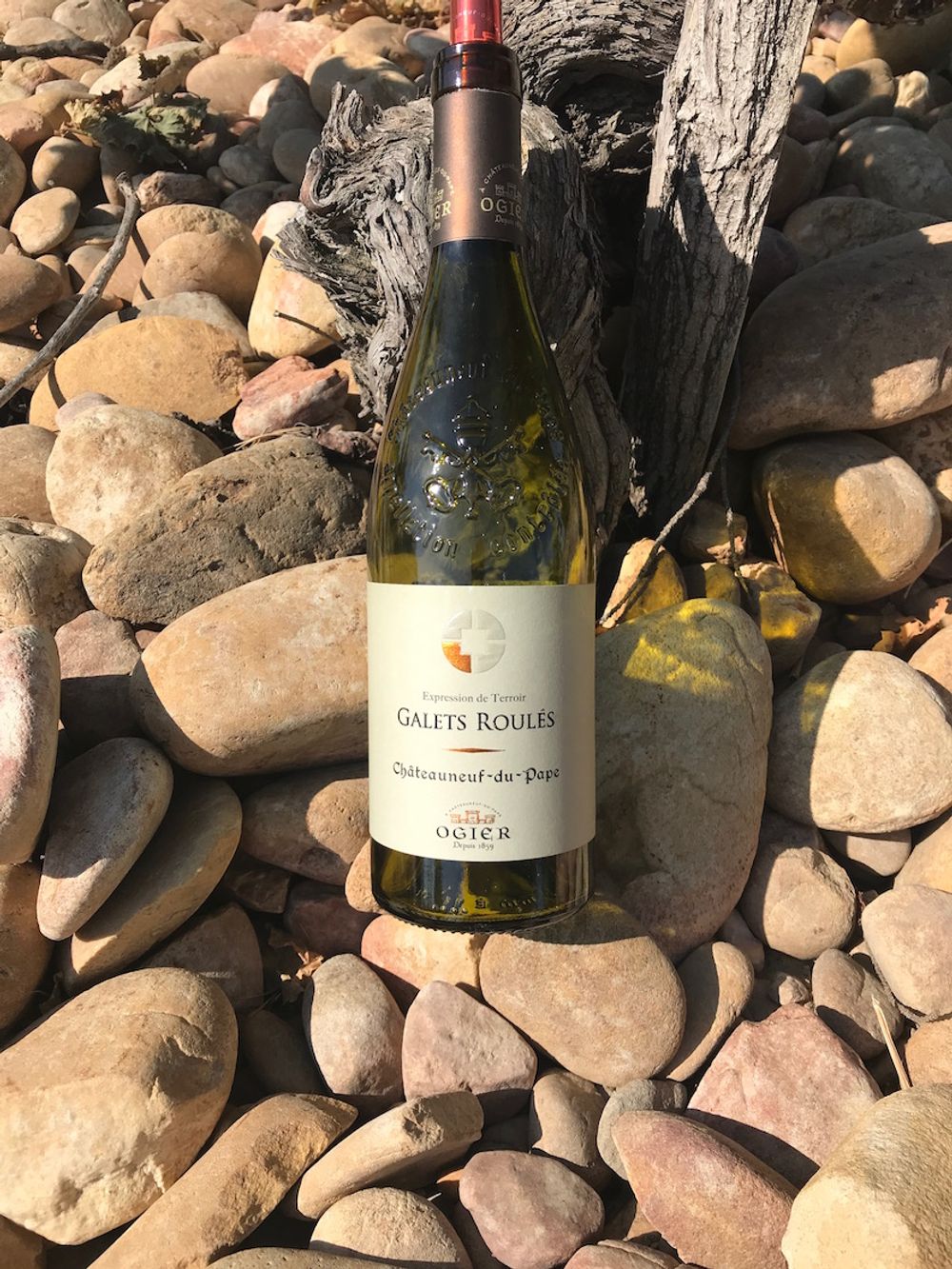
Stop 2: tasting Grenache made from vines grown on pebbles
In order to make it work each e-bike had a basket on the front, a tasting glass, iced water, sun hat and tasting booklet.
The four stops were spread about three miles apart, visiting the limestone or éclats calcaires site first where the Grenache was medium body, angular with its tannins (14.5% ABV); second was the galets roulés or pebbles vineyard where the Grenache was more broody and had way more structure and power (15.5% ABV).
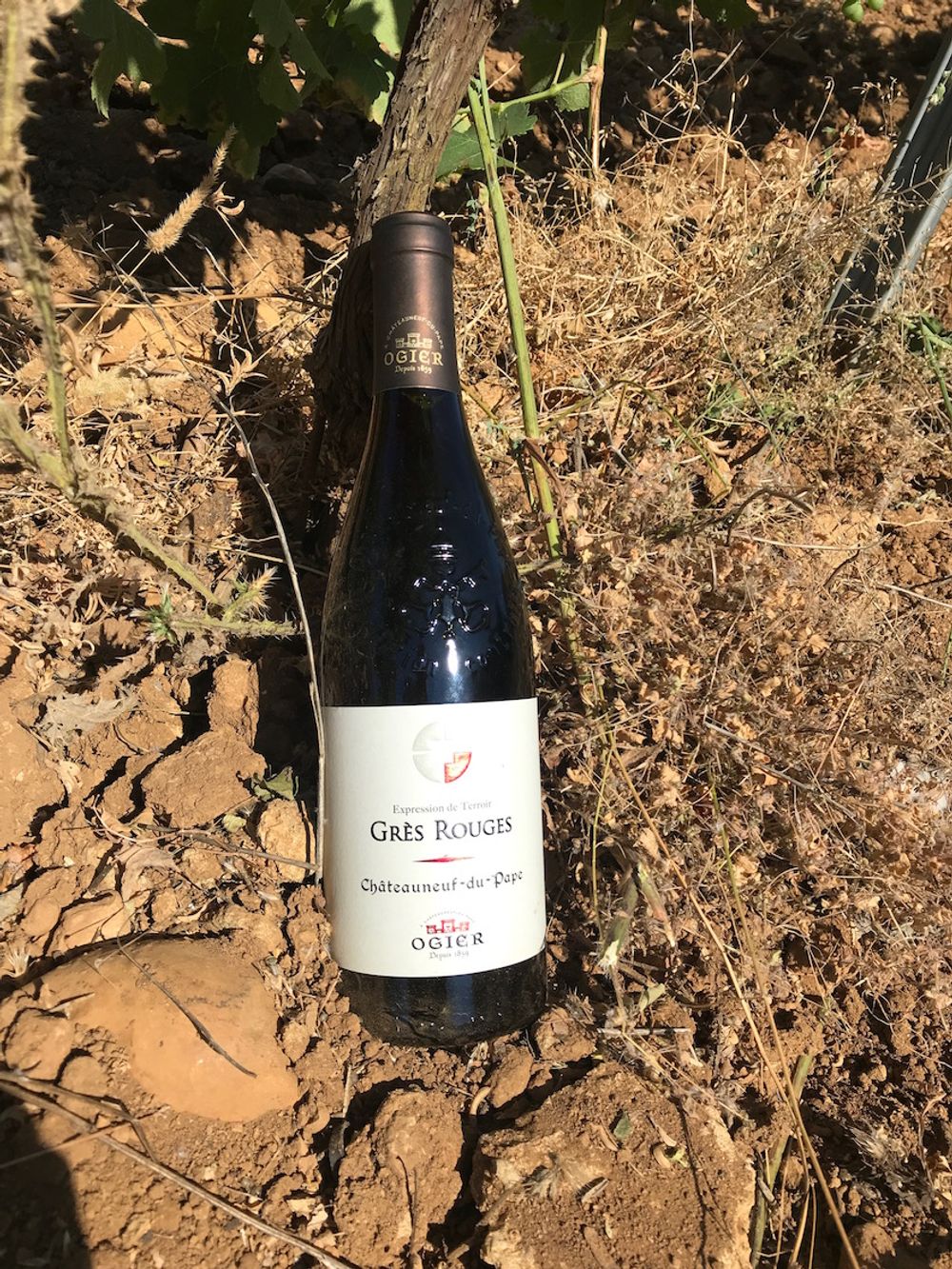
Stop 3: tasting Grenache made from vines grown on sandstone
The third vineyard was the sandstone or grès rouges site where the overriding characteristics were higher acidity, stickier tannins and an over-ripe pomegranate edge; last we visited a fine sand or safres vineyard where we had to ditch the bikes as the path was too sandy and almost ‘wade’ up to the vineyard where the vines were somehow managing to find a way down to the water table. The Grenache here was noticeably different again – more elegant with sandpaper tannins and a nice grippy finish.
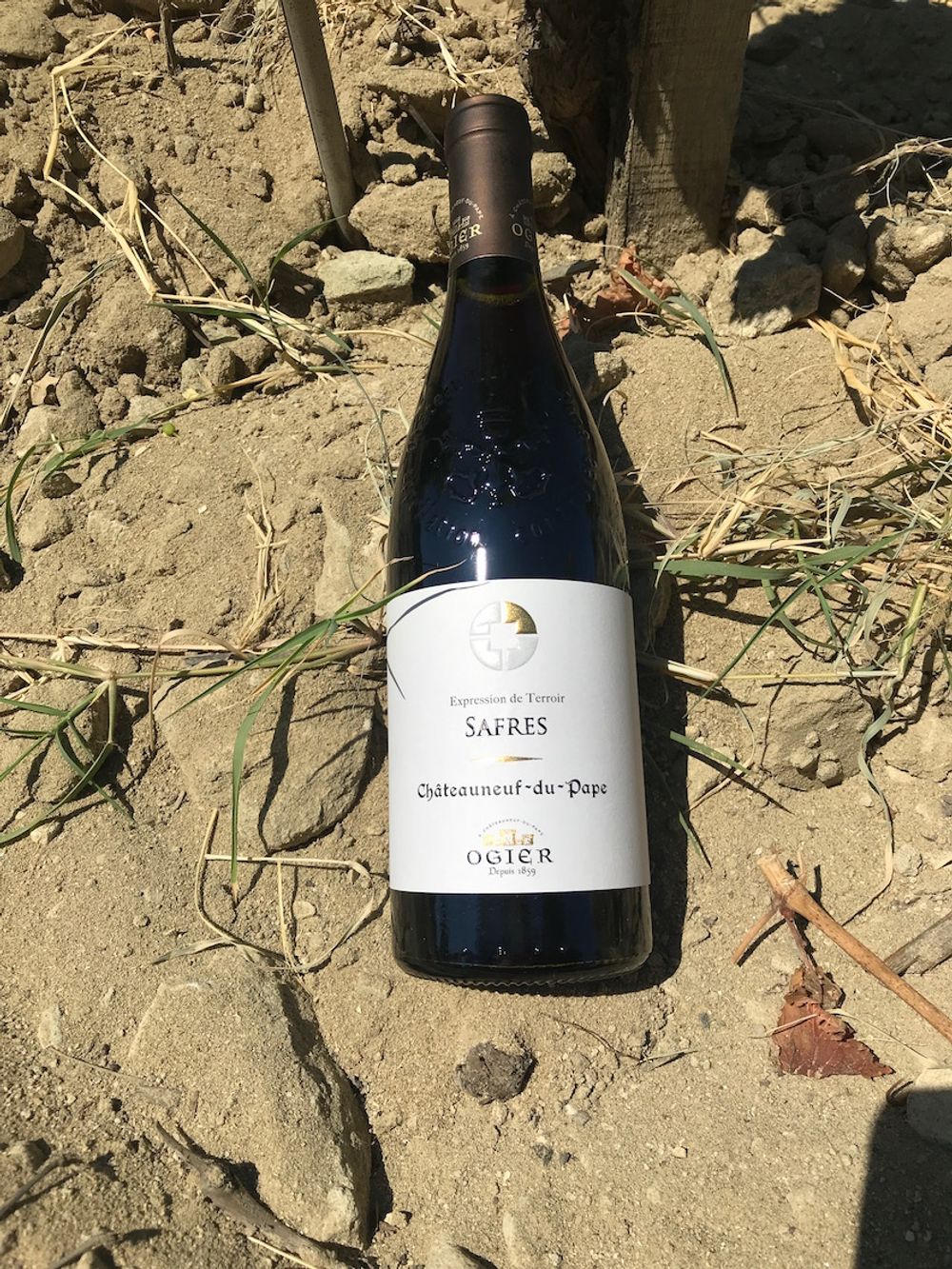
Stop 4: tasting Grenache made from vines grown on sand
A comparative tasting followed where we had our impressions in the field reinforced and fine-tuned before we then tried (and failed pretty miserably) to make an impressive blend of the four types of Grenache into one. The difference that adding just 5% of one of the four individual wines made to the overall blend was considerable and eye-opening and illustrated the power of terroir to different wine expressions.
But for all of us, experiencing this first hand on bikes was the key and a tool that many wineries could use either with journalists or with tourists wanting to have a more in-depth wine visit.
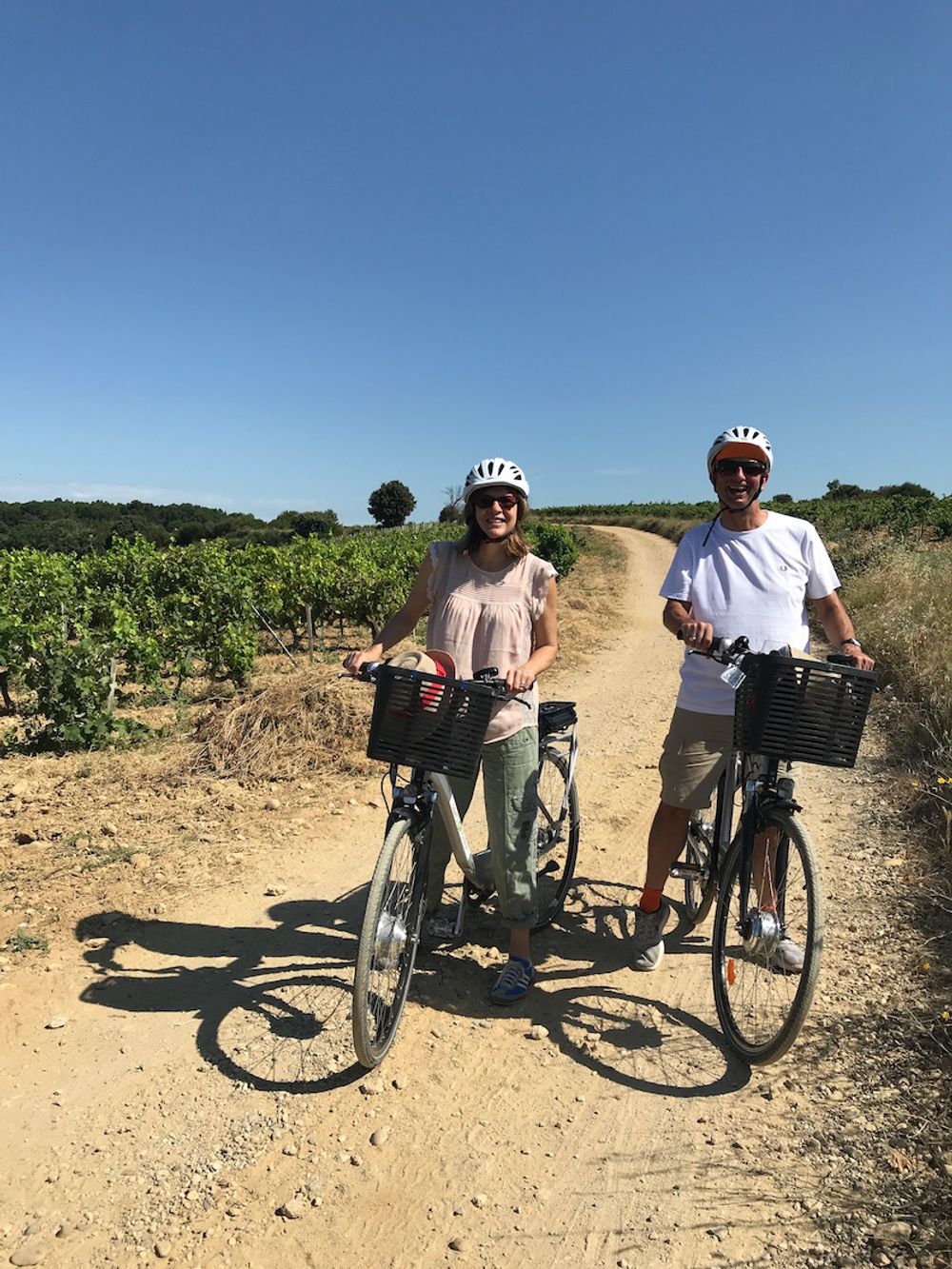
“Can we do it again!” Emma Diggory and Peter Dean



